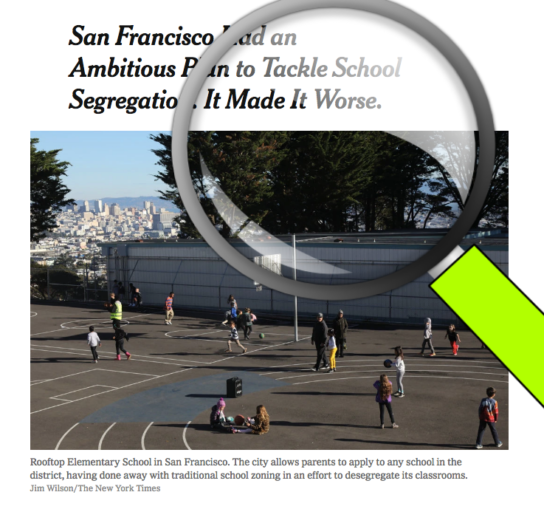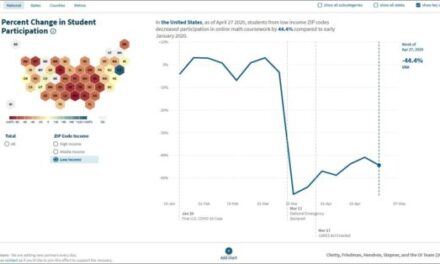The story behind a recent New York Times piece about San Francisco and school choice
By Gail Cornwall
Late last month, New York Times’ national education reporter Dana Goldstein wrote about public school choice and segregated schools in San Francisco. Headlined San Francisco Had an Ambitious Plan to Tackle School Segregation. It Made It Worse, the story hits several nails squarely on the head.
Segregation in this uniquely diverse city is a serious issue deserving of attention. Low-income parents and students of color are not well-served by the current system of citywide school choice. Moderate- and high-income white parents opt out of the school district in large numbers. Roughly 20 percent of the city’s elementary schools are considered racially isolated.
As someone who has written about choice and integration in the city and also is a parent of two elementary school children attending a district school, I recognize these truths and agree that change is imperative.
But there are several important weaknesses in Goldstein’s article that could mislead parents, readers, and policymakers.
The piece lays blame for segregation at the feet of San Francisco’s citywide public school choice system. It oversimplifies the views and priorities of lower-income non-white families. And, though Goldstein told me it wasn’t meant to, the article seems to endorse a controversial return to a restriction of choice in favor of a form of neighborhood attendance zones.
“Parental choice has not been the leveler of educational opportunity it was made out to be,” writes Goldstein. “San Francisco’s ambitious plan offers a cautionary tale.”
But another cautionary tale is one of national reporters parachuting into local contexts and getting the story wrong.
Goldstein’s narrative makes San Francisco’s citywide public school choice system out to be a fool’s errand on both an individual and systemic scale. But that’s an oversimplification of what’s really going on. And it turns out I’m not alone in having concerns about how the story depicts school choice and integration.
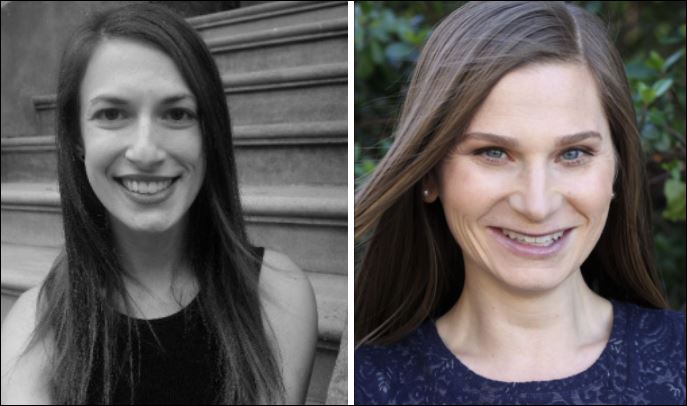
As part of this column, New York Times national education correspondent Dana Goldstein (left) emailed with San Francisco-based freelance education writer and parent Gail Cornwall (right) about her story.
There are many aspects of the San Francisco story that Goldstein gets right.
Under the school assignment system known in San Francisco as “the lottery,” parents choose and rank as many district schools in the city as they please, regardless of where they live. Applicants who live in census tracts (basically chunks of neighborhoods) where students have scored low on state tests in the past are given priority, regardless of family income or race.
However well intended, the implementation of the current system has a number of flaws, including that it allows some gentrifiers to gain an advantage. I should know, having rented a brand-new apartment in a low-scoring census tract that helped get my kids into a popular school.
Goldstein’s piece rightly notes that lack of a robust transportation budget means that low-income families end up with less than ideal access to the well-resourced schools that sit far from their homes.
It also illustrates how time-consuming, complicated, and prolonged the lottery process can be for parents — a burden more easily borne by some than others.
And Goldstein captures a moment in which several school board members have aligned around a return to neighborhood schools.
The problem is, the story doesn’t stop there.
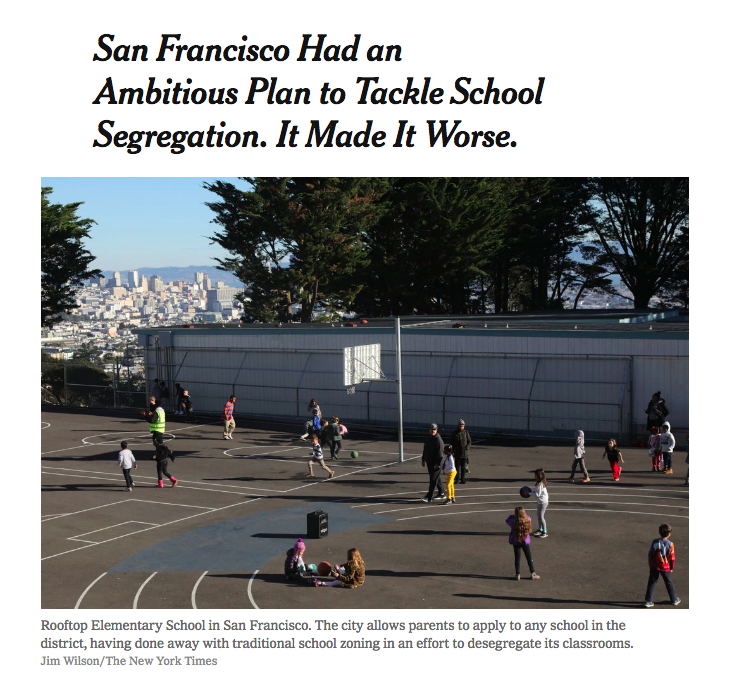
While Goldstein’s story attributes school segregation to San Francisco’s “ambitious” citywide lottery system, the lottery is neither ambitious nor entirely to blame.
The first issue with Goldstein’s piece is its description of the city’s current lottery system as if it represents a concerted, robust effort to integrate schools.
San Francisco did “away with traditional school zoning 18 years ago in an effort to desegregate its classrooms,” Goldstein writes, describing the current system as “an ambitious plan to tackle segregation.”
Well, not exactly.
If San Francisco ever had what Goldstein describes, it was the system of busing and racial enrollment caps that, as this Urban Institute paper explains, followed a 1971 court case and consent decree. That effort was the most ambitious effort to desegregate the city’s schools to date.
As Julie Roberts-Phung of the San Francisco Families Union explained to me in a recent interview, “The city has never taken a serious, focused approach to integration.”
The current lottery is the result of a series of lawsuits and compromises, a watered-down system that tries not to lose sight of diversity, not some grand experiment in integration.
Sign up here for a free newsletter featuring the week’s best education news and newsroom comings and goings.
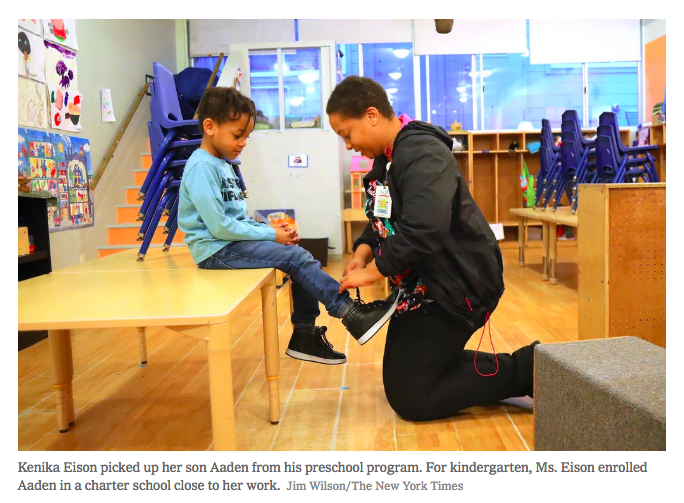
White parents are overrepresented in the lottery and underrepresented in the school system. However, the images accompanying the Times story predominantly depict families who appear to be Latino and African American.
Another concern is Goldstein’s assertion that the lottery system and low odds of a “dream placement” are “a major reason wealthy parents here opt out of public schools.”
That’s not entirely wrong, but it abbreviates the multi-round system used here and also obscures the full story of white flight.
San Francisco’s lottery works differently than ones in other cities. It is not designed to produce final results in the initial March round of admissions that Goldstein chronicles.
In San Francisco, the lottery includes four rounds that extend into May and the summer. And, as I described in a recent San Francisco Chronicle article, most parents get one of their top choices — eventually.
This year, 74 percent of district applicants received their first or second choice school in the initial round. A significant number of those who stick with the process will, too.
In other words, while Goldstein is right to report that disappointing results have “soured many,” she leaves out the fact that many, many more families wind up satisfied.
Why then don’t many white families who reside in San Francisco send their kids to district schools? For starters, as school board member Alison Collins has detailed on her blog SFPS Mom, a full third of white families fled the city’s schools when busing began in the 1970s. With blips here and there, they never came back.
And, as school board member Mark Sanchez told me in a recent SF Chronicle piece, many moderate- to high-income parents believe in integration in theory but still aren’t comfortable with their children sharing a classroom with low-income black and brown children.
It’s true that some white collar parents pull out of the lottery mid-process, like the two-doctor couple Goldstein interviewed. Others don’t bother with it at all because it’s too unpredictable.
But I’ve seen one affluent family after another receive a first-round spot in their favorite district school just around the corner from their home and go private anyway, even though the private school admissions process is no cakewalk.
The hard truth is that many wealthy parents opt out of public schools because they’ve been convinced they’re not good enough for their kids.
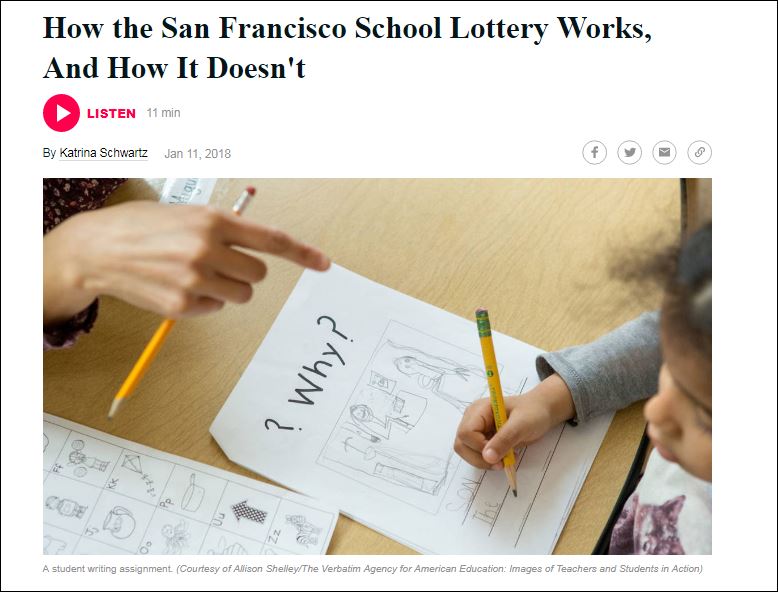
The January 2018 KQED version of the story takes a more neutral look at the current system.
It’s somewhat awkward to note, given that Goldstein and I are both white college-educated women, but another concern is the way the article represents the views of low-income people of color.
In her piece, Goldstein quotes School Board President Stevon Cook, an African American man who believes that the citywide system hurts neighborhood schools in low-income areas. Overall, she features two Latino families, two black parents, an Asian parent, and a white one in her piece.
She writes that “the voices of parents who feel hurt by the lottery hold powerful political sway here.”
But the way her piece is constructed leaves a misleading impression that black and Latino parents are predominantly dissatisfied with the lottery.
Actually, “it’s white and Asian parents complaining about the stress of the [lottery] system,” observes Ken Archer, a white parent.
Katrina Schwartz’s January 2018 KQED piece on the San Francisco lottery quotes African American mother Raquel Knighten saying, “I think overall, it’s a much better feeling than, ‘Your child has to go to this school.’ And you have no options.”
Under the current lottery, roughly 75 percent of African American students living in one low-scoring neighborhood choose to attend a school elsewhere.
That’s why the district’s African American Parent Advisory Council vigorously opposed the resolution to explore changes to the lottery system that passed the board late last year.
The African American Parent Advisory Council position is that neighborhood schools need to be improved before the lottery is dismantled.
To learn more about how the media covers education, follow The Grade on Twitter and Facebook.
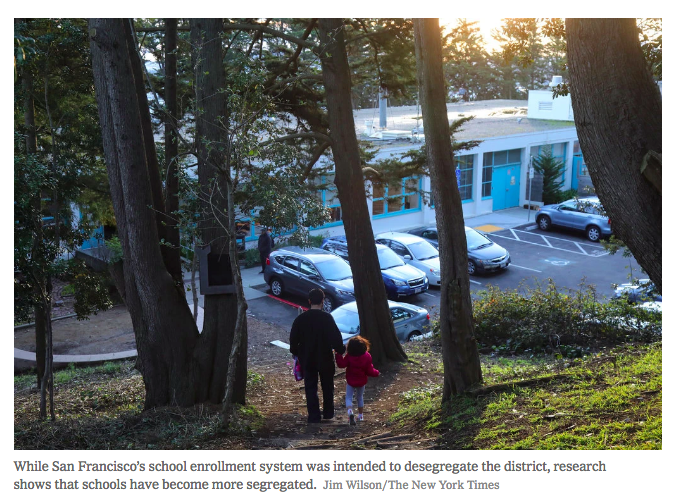
If changes are needed to improve the current system, returning to attendance zones is not the obvious answer it’s presented to be in the Times article.
In her piece, Goldstein writes, “What happened in San Francisco suggests that without remedies like wide-scale busing, or school zones drawn deliberately to integrate, school desegregation will remain out of reach.”
On the need for more school transportation, I and everyone else I hear talking about integration in San Francisco would agree.
However, moving toward geographic zones of limited choice is a controversial idea — not a consensus solution.
Some financially comfortable white parents in neighborhoods with high demand schools have long advocated for a return to neighborhood schools, and some African American and Latino leaders have recently joined them.
However, other minority families see the term “zones” as code for “stay out of my neighborhood.”
There’s also a concern that zones would generate residential re-segregation. Under the current system, “you can move to a neighborhood without sending your kids to school there,” says Ken Archer, a white parent. He speculates that if the district creates zones, “the neighborhoods will re-segregate.”
This may or may not be true. There is no clear answer. But you wouldn’t know it from reading Goldstein’s piece.
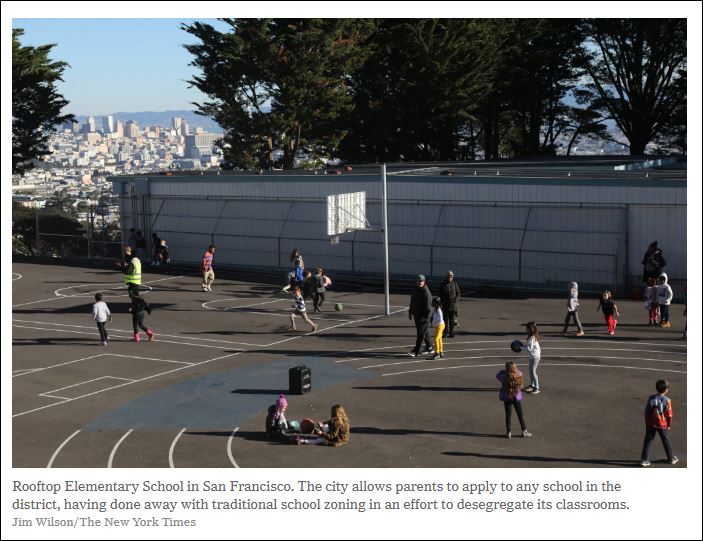
Cornwall’s children attend Rooftop Elementary, one of the most highly-desired schools in the city.
Halley Potter, a senior fellow at the Century Foundation, told me that when she read Goldstein’s article she was nervous that people would think it demonstrated that choice cannot be a lever for integration. But that’s not a fair conclusion.
“San Francisco made some serious missteps” in designing the lottery, according to Potter. The district lottery “never really put the effort in needed to create an equitable choice system that facilitates integration.”
The lottery system did not fail to integrate schools in San Francisco. What failed was lack of robust transportation and strong bureaucratic implementation, along with the persistent refusal of some parents to send their kids to school with black and brown children.
Goldstein’s story had all the facts necessary to describe the current system’s rise and fall, and what board members plan to do next.
But its lack of nuance renders a misleading picture of both segregation in San Francisco and the potential of public school choice programs across the nation.
Related posts
New documentary highlights the need to deepen school integration coverage
ABOUT THE AUTHOR

Gail Cornwall
Gail Cornwall works as a stay-at-home mother and freelance writer in San Francisco. Her former lives as a public school teacher and lawyer inform her writing. Find out more at gailcornwall.com/articles or follow her on Twitter at @gailcornwall.


